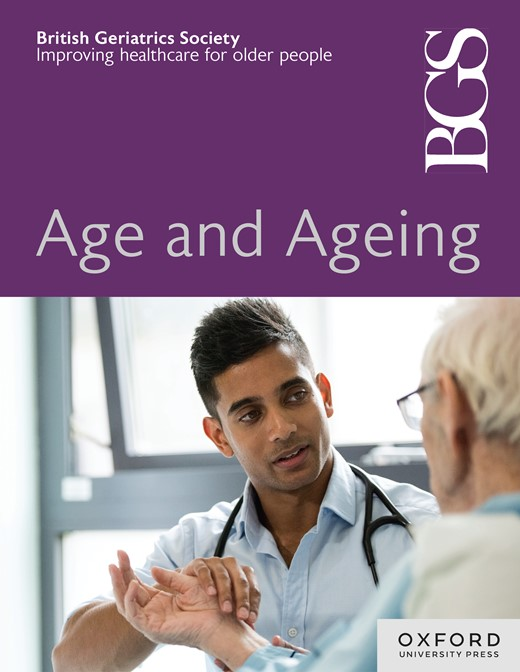3170 Factors associated with high adherence to secondary preventative medications 12 months after a stroke
IF 6
2区 医学
Q1 GERIATRICS & GERONTOLOGY
引用次数: 0
Abstract
Introduction Prior stroke is one of the biggest risk factors for future stroke events. Secondary prevention medications are key to reducing subsequent vascular events, and guidelines recommend use of antithrombotics, antihypertensives and lipid lowering drugs. We carried out a retrospective study of adherence to these medications in a post stroke population. Methods Consecutive patients admitted with acute stroke to a Dublin hospital between July 2022 and November 2023 were invited to participate. Participant interviews were carried out at 1 year post stroke to collect demographic and clinical information and evaluate care needs. Functional ability was graded using the Modified Rankin Scale (mRS). Adherence to three key categories of secondary preventative drugs was assessed using the 4-item Morisky Medication Adherence Scale, and participants were asked to show all current medications, which were compared to the discharge prescription. Results Interviews were conducted with 197 participants 1 year post stroke. Mean age was 68.8 years and 66% were male. Ethnicity was as follows: 79% white Irish, 11% other white, 5% African, 5% Arabic/Asian/others. Twelve (6%) were living in nursing homes while 68% were functionally independent with mRS 0–2. High adherence to all prescribed medicines was reported at 79% and was higher for antihypertensives and antithrombotics (87%) than for lipid-lowering drugs (78%). There were no statistically significant differences in self-reported adherence between gender or race subgroups. Adherence was better for participants who were functionally dependent by mRS (71% vs 97%, p < 0.0001) and those who had an involved caregiver (69% vs 89%, p < 0.0001). Discussion Self-reported adherence to medication was high in this cohort but one fifth were not adherent to important secondary prevention medications 1 year after a stroke. Adherence was higher for those who had more disabling strokes and an involved caregiver. No race or gender disparities in adherence were observed in our population.卒中后12个月对二级预防药物高依从性的相关因素
既往卒中是未来卒中事件的最大危险因素之一。二级预防药物是减少后续血管事件的关键,指南建议使用抗血栓、抗高血压和降脂药物。我们对卒中后人群对这些药物的依从性进行了回顾性研究。方法选取2022年7月至2023年11月都柏林某医院连续收治的急性脑卒中患者。参与者访谈在卒中后1年进行,以收集人口统计和临床信息,并评估护理需求。功能能力评分采用改良兰金量表(mRS)。使用Morisky药物依从性量表评估三种关键类别的二级预防药物的依从性,并要求参与者显示所有当前药物,并将其与出院处方进行比较。结果对197名卒中后1年的参与者进行了访谈。平均年龄68.8岁,男性占66%。种族如下:79%的爱尔兰白人,11%的其他白人,5%的非洲人,5%的阿拉伯/亚洲/其他。12人(6%)住在养老院,68%的人功能独立,mRS为0-2。据报道,对所有处方药的高依从性为79%,抗高血压药和抗血栓药(87%)高于降脂药(78%)。在性别和种族亚组之间,自我报告的依从性没有统计学上的显著差异。功能依赖mRS的参与者的依从性更好(71% vs 97%, p <;0.0001)和有看护人参与的患者(69%对89%,p <;0.0001)。在这个队列中,自我报告的药物依从性很高,但五分之一的人在中风后一年内没有坚持使用重要的二级预防药物。对于那些中风致残性更强且有护理人员参与的人来说,依从性更高。在我们的人群中没有观察到依从性的种族或性别差异。
本文章由计算机程序翻译,如有差异,请以英文原文为准。
求助全文
约1分钟内获得全文
求助全文
来源期刊

Age and ageing
医学-老年医学
CiteScore
9.20
自引率
6.00%
发文量
796
审稿时长
4-8 weeks
期刊介绍:
Age and Ageing is an international journal publishing refereed original articles and commissioned reviews on geriatric medicine and gerontology. Its range includes research on ageing and clinical, epidemiological, and psychological aspects of later life.
 求助内容:
求助内容: 应助结果提醒方式:
应助结果提醒方式:


